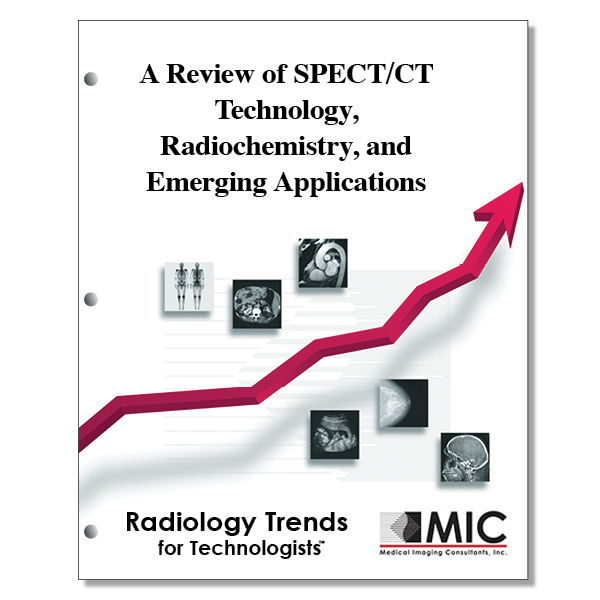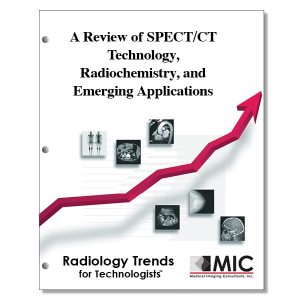

A Review of SPECT/CT Technology, Radiochemistry, and Emerging Applications
Twenty years after the commercial introduction of SPECT/CT, lessons learned during its development are reviewed and emerging applications are presented.
Course ID: Q00660 Category: Radiology Trends for Technologists Modalities: CT, Nuclear Medicine1.5 |
Satisfaction Guarantee |
$24.00
- Targeted CE
- Outline
- Objectives
Targeted CE per ARRT’s Discipline, Category, and Subcategory classification:
[Note: Discipline-specific Targeted CE credits may be less than the total Category A credits approved for this course.]
Nuclear Medicine Technology: 1.00
Procedures: 1.00
Other Imaging Procedures: 1.00
Outline
- Introduction
- Pioneering Early Years
- If a Little is Great, is More Better
- Coming of Age and Ready for Prime Time
- High-Level Features Coming Together
- Precision Medicine as Breakthrough Application
- Leveraging the Full Diagnostic Power of SPECT/CT
- Progress in Physics and Engineering
- Innovation in Detector and Collimator Design
- The Next Major Leap Forward
- Innovations and Challenges in SPECT Radiopharmaceutical Development
- Strength and Challenges of SPECT Radionuclides
- Innovations in SPECT Tracers for Imaging and Treatment
- Conclusion
Objectives
Upon completion of this course, students will:
- be familiar with the limitations of the first commercial SPECT/CT imaging devices
- identify the past clinical barriers of the early SPECT/CT imaging systems
- be familiar with the remaining challenge in physics and engineering in SPECT/CT
- identify what year 64 slice CT capabilities emerged on SPECT/CT systems
- be familiar with confusing terminology used in describing early CT acquisition protocols
- identify the technique used to reduce radiation exposure when performing SPECT/CT
- identify the year absolute quantification became available when performing SPECT/CT
- be familiar with the application of 177Lu in nuclear medicine
- identify the SPECT/CT requirements to determine individualized dosimetry
- be familiar with the percentage of in vivo accuracy of SPECT/CT quantification of 177Lu-prostate specific membrane antigen.
- identify the indication for developing the clinical application of high-end bone SPECT/CT
- be familiar with the characteristics of CZT detectors as compared with traditional NaI detectors
- identify the advantages of using CZT detectors when performing SPECT/CT
- be familiar with the spatial resolution of CZT SPECT imaging systems
- recognize the SPECT/CT gantry design that is leading to a paradigm shift in nuclear medicine
- recognize the materials used to craft novel collimators for CZT SPECT systems
- understand what is required to provide reproducible, consistent, and accurate standardization
- be familiar with the organizations that would assist in standardizing SPECT/CT quantification
- identify the radionuclide used in 85% of all diagnostic nuclear medicine procedures
- be familiar with the strengths of SPECT dual-isotope imaging
- identify the first small-molecule prostate-specific membrane inhibitor radiotracers
- be familiar with the use of 99mTc-duramycin
- be familiar with the use of 99mTc-HYNIC-c-Met-binding peptide
- recognize the characteristics of ideal theranostic radionuclides
- identify the imaging modality often benchmarked against SPECT/CT
